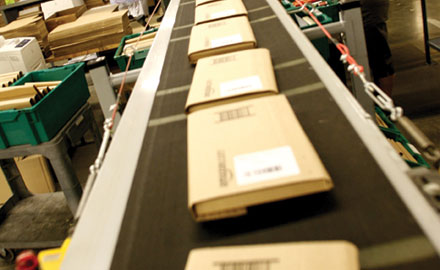Your Next Supply Chain
New forces and dynamics are emerging to influence the supply chain designs of the future. And even the old forces are influencing it in new ways. Interviews with David Simchi-Levi and Charles H. Fine — two of the field’s premier thinkers — suggest how to capitalize on what’s coming.

Image courtesy of Amazon.com
From the Editor
Looking backward, the trends that dominated supply chain management are easy to spot. As leading supply chain thinker David Simchi-Levi describes, the 1980s were all about the demands of just-in-time. In the ’90s, it was outsourcing. In the ’00s, it’s been the emergence of the Internet — which especially shaped procurement practices.
The Leading Question
What does the future of supply chain design look like?
Findings
- There are six main forces that will influence supply chain design: globalization; rising logistics; rising risk; labor cost increases in the developing world; sustainability; and growing volatility.
- One of the main design choices is between win-win (integral) and zero-sum (modular) architectures. An industry’s level of maturity is a key driver of the choice.
But the coming decade? Not so easy to see.
Some long-present factors, such as the sweep of globalization, will have new effects. Other factors, such as rising levels of risk, will throw greater weight — and have broader impact — than they did before. And the whole question of supply chain design will be more central to overall organizational competitiveness than it has been. As longtime visionary Charles H. Fine argues, supply chain questions become value chain questions; the whole dynamic ecosystem of a company’s suppliers, customers and stakeholders, not to mention the ecology of the industry it competes in, now must drive choices in supply chain design. Some of the choices look simple but aren’t. (Do I minimize costs, or maximize resilience?) Some of them look obvious but are subtle. (Do I create a game that’s win-win, or zero-sum?)
In the conversations on the following pages — and, in greater depth, on MIT Sloan Management Review’s Web site, sloanreview.mit.edu — Simchi-Levi and Fine, two of the world’s premier strategists on the subject, explore those questions and others. Their insights begin to provide a context for how the smartest executives will need to address his or her company’s own unique supply chain design challenges.
Those challenges in general have been under the scrutiny of Simchi-Levi and Fine, both leaders of the MIT Forum for Supply Chain Innovation, for a long time. Simchi-Levi, a professor of civil and environmental engineering and engineering systems at MIT, is also an entrepreneur and executive.

Comments (4)
Rabindranath Bhattacharya
Rabindranath Bhattacharya
Eugene Marino
drskb789